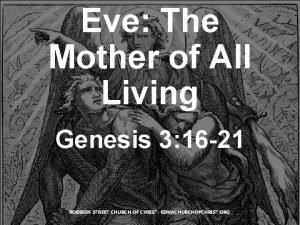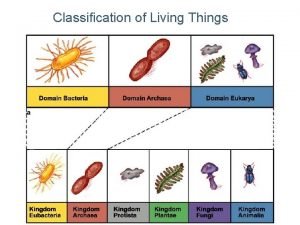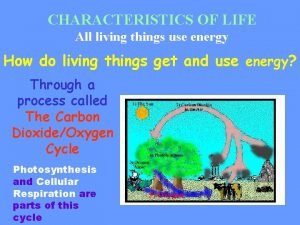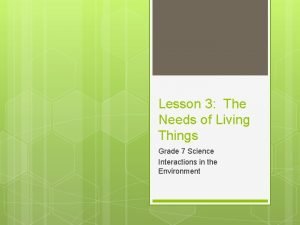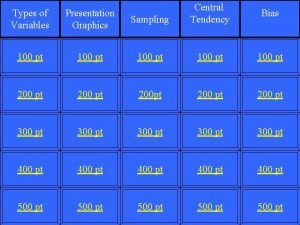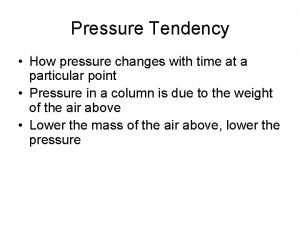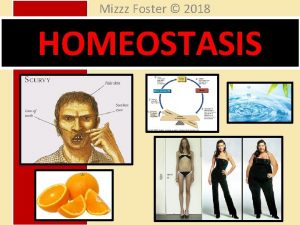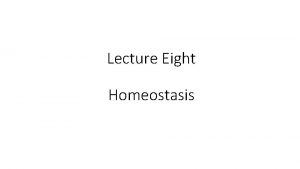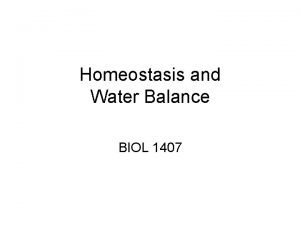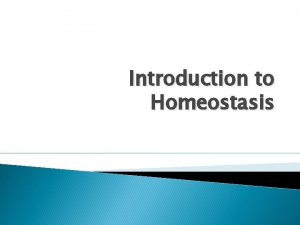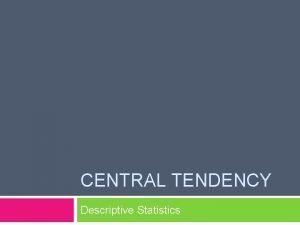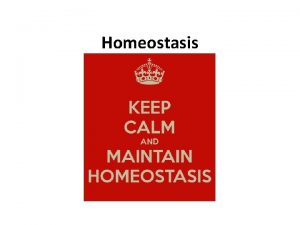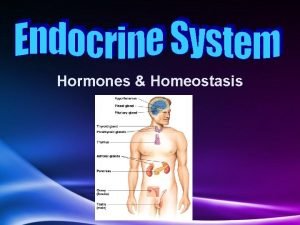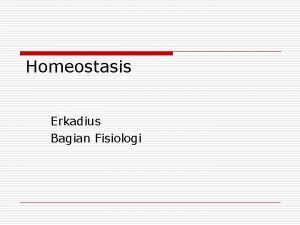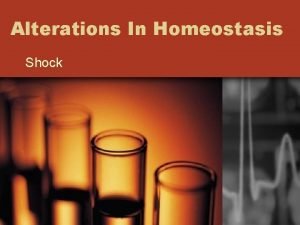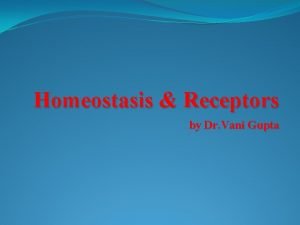HOMEOSTASIS OVERVIEW o Homeostasis tendency of all living
















- Slides: 16

HOMEOSTASIS OVERVIEW o Homeostasis – tendency of all living things to maintain a constant internal environment

HOMEOSTASIS OVERVIEW Conformers vs. Regulators o REGULATORS – maintain internal environment substantially different from external environment o CONFORMERS – internal environment nearly identical to external environment

HOMEOSTASIS OVERVIEW REALITY? o Regulating and conforming are extremes o Most animals typically conform in some environments and regulate in others because environmental conditions vary over time o Cost of regulation can outweigh benefits of homeostasis n Regulation is energy expensive

ENDOTHERMY VS. ECTOTHERMY o ENDOTHERM – warmed mostly from the heat of metabolism n Mammals, birds, some fish, a few reptiles, numerous insect species o ECTOTHERM – warmed mostly from external sources n Most invertebrates, fish, amphibians, reptiles (not birds)

ENDOTHERMY VS. ECTOTHERMY o ENDOTHERM n High metabolic rate n Large amount of heat generated o ECTOTHERM n Low metabolic rate n Little heat generated

ENDOTHERMY VS. ECTOTHERMY o ENDOTHERM n Capable of sustained, intense activity n High level of aerobic metabolism possible due to high, stable body temperature n Supported by other biochemical & physiological adaptations, i. e. elaborate circulatory and respiratory systems o ECTOTHERM n Capable of intense bursts of activity n Metabolic rate to low to provide energy for extended periods of intense activity

ENDOTHERMY VS. ECTOTHERMY o ENDOTHERM n Can survive in a broader range of environments o Terrestrial temperatures generally fluctuate over a greater range of temperatures than aquatic environments; water conducts heat 50 -100 X better than air o ECTOTHERM n Live only where their adaptations help maintain an internal temperature appropriate for chemical reactions.

ENDOTHERMY VS. ECTOTHERMY o ENDOTHERM n Need large amount of food to maintain high metabolic rate – a serious disadvantage when food is limited o ECTOTHERM n Need less food that similar size endotherm in the same environment n Ex. At 20 o. C, at rest, similar size o Human needs 1300 -1800 kcal/day o American alligator needs only 60 kcal/day

Vocabulary Issues o Warm-blooded and cold-blooded are imprecise and misleading o “cold blooded”? ? A basking lizard may have a higher body temperature than some mammals o “constant”? ? In some aquatic environments the body temperature of fish and invertebrates varies less than that of humans

Vocabulary Issues: 2 STRATEGIES (ADAPTATIONS) FOR MANAGING HEAT BUDGET ECTOTHERMIC “externally heated”/ POIKILOTHERMIC “of variable temperature” n body temperature determined by heat gained from or lost to environment (ectothermy) n body temperature allowed to vary with environmental temperature - at rest their temperature is nearly same as that of environment (poikilothermy) n do not produce enough metabolic heat to have much affect on body temperature

Vocabulary Issues: 2 STRATEGIES (ADAPTATIONS) FOR MANAGING HEAT BUDGET ENDOTHERMIC “internally heated”/ HOMEOTHERMIC “of uniform temperature” n bodies warmed by heat generated by metabolism (endothermy) n maintain high, stable internal temperature regardless of environmental temperature (homeothermy) n can vary metabolic rate in response to changes in environmental temperatures

Figure 44. 4 The relationship between body temperature and ambient (environmental) temperature in an ectotherm and an endotherm

Are all endotherms homeotherms? Are all ectotherms poikilotherms? o There is no fixed relationship! o Some marine fish (ectotherms) live in waters with very stable temperatures so their temperature varies less than many endotherms. o Some endotherms like hummingbirds experience wide variations in internal temperatures as they enter states of inactivity.


QUESTION 11: 20 g reptile vs 20 g mammal o Reptile has lower respiration rate. Reptile is ectothermic – rate of respiration related to environmental temperatures o Mammal is endothermic – internal temperature independent of environmental temperature.

QUESTION 12: mammal at 10 o. C and at 21 o. C o At 10 o. C mammal is losing heat into colder environment. o Mammals can increase respiration rate to produce more heat to maintain body temperature o mammal at 10 o. C would have a higher rate of cellular respiration thus consume oxygen at a higher rate
 The smallest living unit of all living things is
The smallest living unit of all living things is Bioflix activity homeostasis hormones and homeostasis
Bioflix activity homeostasis hormones and homeostasis Bioflix activity homeostasis high blood glucose
Bioflix activity homeostasis high blood glucose Name all the rays
Name all the rays Difference between living and non living organisms
Difference between living and non living organisms Is tomato living or nonliving
Is tomato living or nonliving Living non living dead
Living non living dead Seven life process
Seven life process Eve the mother of all living
Eve the mother of all living The 8 levels of classification
The 8 levels of classification Cell to tissue to organ to organ system to organism
Cell to tissue to organ to organ system to organism Life cycle of all living things
Life cycle of all living things What are the 5 basic needs of all living things
What are the 5 basic needs of all living things Are all living things based on the metric system
Are all living things based on the metric system All living things 1955
All living things 1955 Central tendency bias
Central tendency bias What is pressure tendency
What is pressure tendency








